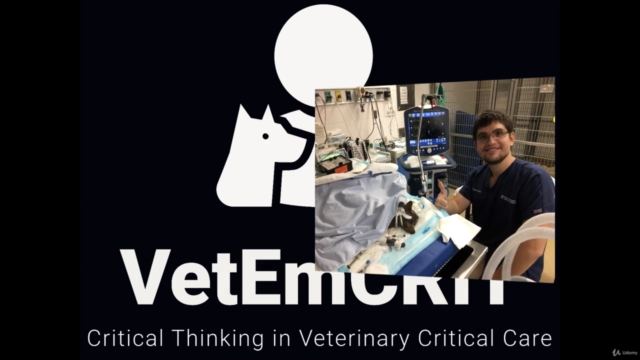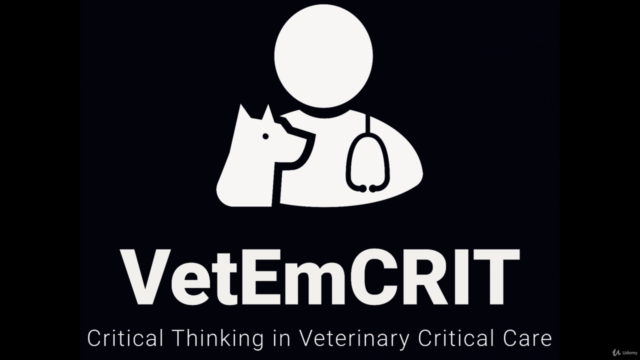Approach to hemorrhagic shock in small animals (veterinary)

Why take this course?
🌟 Approach to Hemorrhagic Shock in Small Animals: A Deep Dive into Diagnosis and Treatment 🌟
Course Overview: This comprehensive online course, led by the esteemed Dr. Igor Yankin, DVM, DACVECC, delves into the critical aspects of hemorrhagic shock in small animals. With a focus on traumatic etiology and an emphasis on managing severe hemorrhagic shock that is resistant to standard therapy, this course offers an evidence-based approach informed by cutting-edge human and veterinary research as well as Dr. Yankin's extensive experience in the field of emergency and critical care medicine.
What You'll Learn:
- Pathophysiology Fundamentals: Grasp the pathophysiologic aspects of hemorrhagic shock, including acute traumatic coagulopathy, vasodilatory shock, and the stages of hemorrhagic shock.
- Damage Control Resuscitation: Understand the principles of damage control resuscitation and the lethal triad.
- Hypotensive Resuscitation: Learn how to implement hypotensive resuscitation to optimize outcomes in patients with hemorrhagic shock.
- Controversies in Blood Pressure Measurement: Explore the controversies surrounding arterial blood pressure measurement in patients experiencing hemorrhagic shock.
- Crystalloid Usage: Get up-to-date recommendations on using crystalloids in patients with traumatic hemorrhagic shock.
- Viscosity Targets: Discover the concept of viscosity targets and their importance in managing hemorrhagic shock.
- Vasopressors and Autotransfusion: Gain insights into the use of vasopressors and autotransfusion for patients with severe hemorrhagic shock.
Designed For: This course is tailored for veterinarians who work in emergency rooms and ICUs, including but not limited to:
- Emergency Veterinarians
- Interns
- ECC and Anesthesia Residents
- Emergency Technicians
- ACVECC Diplomates
Course Structure: The course consists of non-interactive lessons presented through engaging videos, informative journal articles, and well-structured texts. Each lesson is designed to emphasize the most critical takeaways, reinforced by handouts and thought-provoking questions. Here's a breakdown of what you can expect:
✅ Lesson 1: Introduction and Pathophysiology
- Dive into the foundational concepts with a 15-minute video.
- Supplementary journal articles for in-depth reading.
- Test your understanding with a quiz of 5 questions.
✅ Lesson 2: Diagnosis and Damage Control
- A 12-minute video introduces the principles of diagnosis and damage control resuscitation.
- Explore supporting literature through provided journal articles.
- Evaluate your knowledge with a quiz of 5 questions.
✅ Lesson 3: Hypotensive Resuscitation
- Learn the intricacies of hypotensive resuscitation in a concise 9-minute video.
- Complement your learning with additional readings.
- Reflect on what you've learned with a quiz of 2 questions.
✅ Lesson 4: Crystalloid Use and Viscosity Targets
- A focused 4.5-minute video discusses the use of crystalloids and viscosity targets.
- Delve deeper into the topic with journal articles.
- Engage with a quiz of 2 questions.
✅ Lesson 5: Autotransfusion and Pelvic Hemorrhage
- A detailed 5.5-minute video covers autotransfusion techniques, particularly in pelvic hemorrhage cases.
- Access relevant journal articles for further study.
- Assess your understanding with a single question quiz.
✅ Lesson 6: The Use of Vasopressors
- A brief 4-minute video explains the use of vasopressors in hemorrhagic shock management.
- Expand your knowledge base with supplementary readings.
- Test your grasp with a quiz of 1 question.
Final Examination:
- Conclude your learning journey with a final examination comprising 10 questions to ensure you've mastered the material.
This course is designed to be both informative and engaging, offering you the opportunity to significantly enhance your expertise in managing hemorrhagic shock in small animals. Enroll now and take the first step towards becoming an expert in this vital area of veterinary medicine! 🚀🐾
Course Gallery




Loading charts...